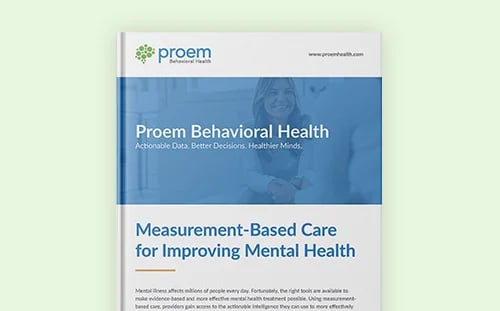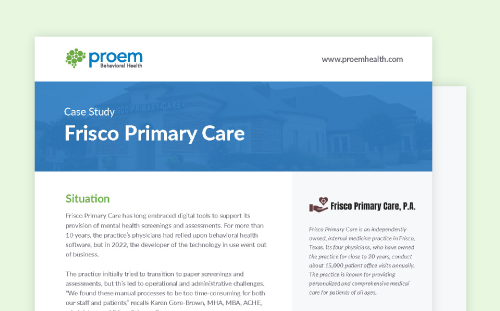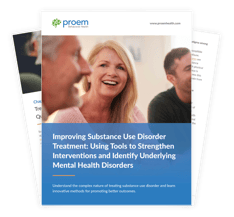eBook: Using Tools to Strengthen Interventions and Identify Underlying Mental Health Disorders in Substance Use Disorder Treatment
Take a closer look at the current challenges and opportunities in SUD treatment to effectively promote positive patient outcomes.
Substance use patterns are on a dangerous upward swing across the U.S. In 2023, 15.35% of American adults reported having an SUD, nearly twice the 7.74% reported in 2022.
Treating substance use disorder (SUD) can be complex. Each patient’s needs are unique and many experience co-occurring disorders, further complicating treatment. These complexities highlight the need for more effective methods and tools to assess SUD and co-occurring disorders.
This guide explores how providers can overcome obstacles to effective SUD treatment, accurately and quickly assess comorbid conditions, identify optimal treatment strategies and foster positive outcomes. It also explores the role of digital platforms in facilitating accessible and evidence-based solutions, empowering providers across specialties to assess dual diagnoses.
An integrated approach and early screening are essential for improved patient outcomes. By building trusting relationships with patients and using evidence-based screening tools, providers can begin to help patients with SUD reclaim their lives.
Ready to learn more? Get answers to these important questions:
- How can I integrate SUD screening tools into my practice?
- What are the best ways to evaluate drug and alcohol use assessment tools?
- How can I help patients overcome the stigma of SUD treatment?
- What should I understand about treating SUD in adolescent patients?
- Which mental health conditions commonly overlap with SUD?
- What are some best practices for assessing and treating co-occurring disorders?
- How can digital tools be used to improve SUD assessment and treatment outcomes?





.png)
